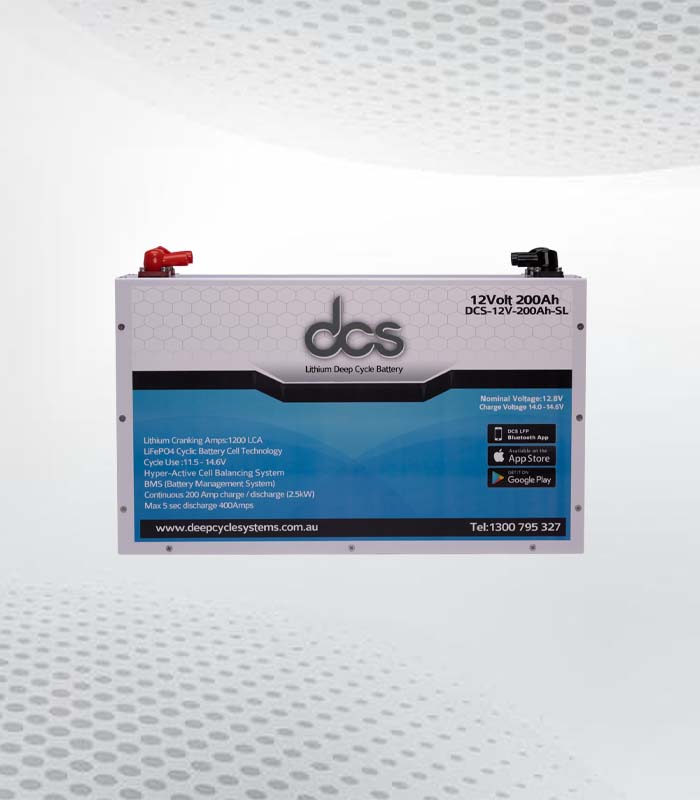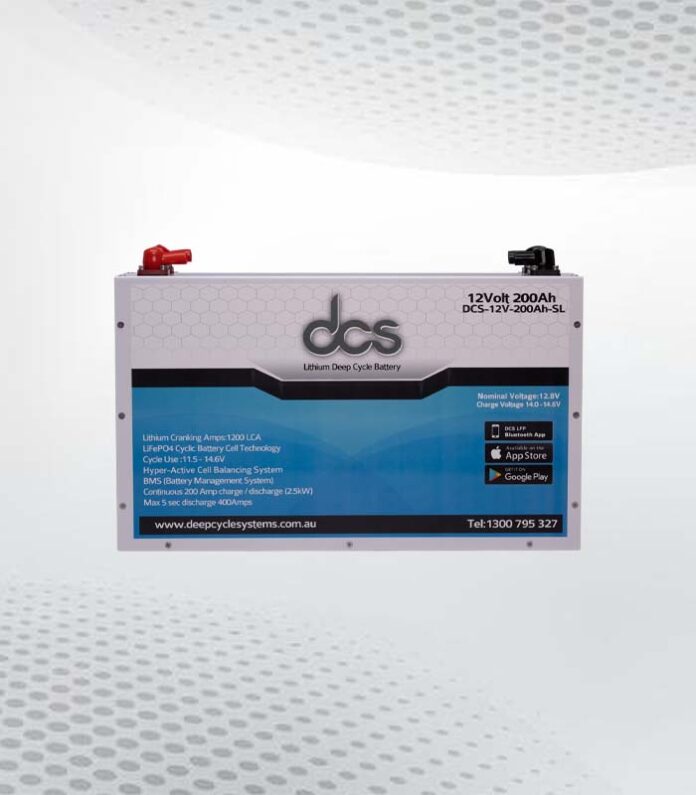When it comes to powering our devices and vehicles, the type of battery used plays a crucial role in determining performance and longevity. Two popular choices in the battery world are Lifepo4 200ah and Li-ion 200Ah batteries. In this blog post, we will take a deep dive into the characteristics, advantages, and applications of these two powerful battery technologies.
Understanding the Basics of Li Ion Battery 200ah
Li Ion Battery 200ah, also known as Lithium Iron Phosphate batteries, is notable in the battery industry for its impressive energy storage capabilities and exceptional cycle durability. These power sources are designed to meet the demands of various applications requiring dependable and high-performing energy solutions. Notably, Lifepo4 batteries exhibit outstanding thermal stability, a feature that sets them apart from many alternatives. This characteristic ensures that they maintain optimal performance even under extreme temperature conditions, enhancing their suitability for a broad spectrum of industries.
Another crucial aspect of Lifepo4 batteries is their safety profile. Thanks to their stable chemistry, these batteries are less prone to overheating and thus present a reduced risk of causing fires or explosions when compared to other battery types. This safety advantage, coupled with their long lifespan, makes Lifepo4 batteries a wise choice for sectors prioritising reliability and durability over mere cost considerations.
Furthermore, the environmental footprint of Lifepo4 batteries is considerably lighter compared to traditional battery technologies. Their non-toxic nature and the absence of hazardous materials within their composition align with the growing trend towards more sustainable and eco-friendly energy storage solutions. This aligns with a broader commitment across industries to minimise environmental impact and embrace greener alternatives.
 Exploring the Advantages of Li-ion 200Ah Batteries
Exploring the Advantages of Li-ion 200Ah Batteries
Li-ion 200Ah batteries stand out in the marketplace for their remarkable energy density, which enables them to store a significant amount of energy in a relatively small and lightweight package. This attribute is particularly beneficial in applications where space and weight are critical factors, such as in portable electronic devices, drones, and electric bicycles. The compact and light nature of these batteries not only facilitates ease of mobility but also contributes to improved performance and extended range in electric vehicles.
Another significant advantage of Li-ion 200Ah batteries is their high charge retention capacity. They exhibit low self-discharge rates, meaning they lose their charge very slowly when not in use. This characteristic makes them an excellent choice for applications where batteries may not be regularly charged, such as in emergency power backups and seasonal equipment.
Efficiency plays a pivotal role in the appeal of Li-ion batteries. They possess a high Coulombic efficiency, which refers to the ratio of the charge that can be taken out of the battery compared to what was put in during charging. This efficiency translates into less energy loss during charge and discharge cycles, ensuring that more of the stored energy is usable.
Moreover, the adaptability of Li-ion 200Ah batteries to rapid charging technologies enhances their usability and convenience for users. This capability allows for quicker replenishment of energy, reducing downtime and facilitating higher productivity in both industrial and consumer applications.
While Li-ion batteries offer numerous benefits, it is crucial to handle them with care and adhere to recommended practices to maximise their lifespan and performance. Regular maintenance checks and appropriate charging methods are vital to sustain their efficacy over time.
The Key Differences Between Lifepo4 and Li-ion Technologies
Delving into the distinctions between Lifepo4 and Li-ion battery technologies unveils fundamental contrasts that influence their applications and performance. Lifepo4, with its lithium iron phosphate composition, provides a robust safety profile due to its thermal and chemical stability. This stability renders Lifepo4 batteries less susceptible to thermal runaway, a condition that can lead to safety hazards in battery technology. Consequently, they are a preferred option in applications where safety is paramount.
In contrast, Li-ion batteries, characterised by their lithium cobalt oxide chemistry or similar variants, offer superior energy density. This makes them particularly appealing for use in devices where space is at a premium and weight reduction is desirable. Their high energy density translates to longer usage times between charges, a critical factor in the mobility of electronic devices and electric vehicles.
Another key difference lies in the operational lifespan and cycle count. Lifepo4 batteries boast a longer cycle life compared to their Li-ion counterparts, which means they can be charged and discharged more times before their capacity diminishes significantly. This attribute is especially valuable in applications where frequent charging is expected or in systems designed for longevity.
On the efficiency front, Li-ion batteries typically exhibit higher charge and discharge rates, facilitating rapid energy transfer. This characteristic is instrumental in scenarios where quick recharge capabilities are essential, albeit at the expense of a slightly reduced cycle life over time.
Ideal Applications for Lifepo4 200-ah Batteries
Lifepo4 200-ah batteries excel in environments where safety, longevity, and robust energy storage are paramount. Their exceptional cycle durability and thermal stability render them highly suitable for renewable energy systems, notably in solar power setups and wind farms. These batteries’ ability to efficiently store and discharge energy over extended periods makes them a preferred choice for off-grid energy solutions, ensuring a reliable power supply even in the absence of sunlight or wind.
In the automotive sector, electric vehicles (EVs) benefit from the long life and consistent performance of Lifepo4 batteries. The technology’s resilience to frequent charging and discharging cycles aligns well with the daily use patterns of EVs, contributing to the vehicles’ operational efficiency and reducing the need for frequent battery replacements.
Marine applications also take advantage of Lifepo4 200-ah batteries, particularly in electric boats and yachts. The batteries’ high safety profile, coupled with their resistance to thermal runaway, ensures a safer and more dependable energy source in environments where failure could lead to critical situations.
Additionally, their application in power backup systems and uninterruptible power supplies (UPS) underscores their versatility. Facilities that require a steady and reliable power source, such as hospitals, data centres, and telecommunications infrastructure, find Lifepo4 batteries to be an indispensable asset, providing peace of mind through their dependable energy storage capabilities.
Where Li-ion 200Ah Batteries Shine the Brightest
Li-ion 200Ah batteries demonstrate their unparalleled prowess in the domain of consumer electronics, powering an extensive array of gadgets from smartphones to laptops with exceptional efficiency. Their compact and lightweight design is instrumental in enhancing the portability of these devices, allowing for sleeker, more ergonomic designs without compromising on battery life. In the realm of electric vehicles (EVs), these batteries play a pivotal role by contributing to lighter vehicle designs, which in turn boosts performance and extends driving range. Their ability to uphold a high energy density means EVs can travel longer distances on a single charge, a crucial factor in the ongoing transition towards sustainable transportation solutions.
In addition to personal use and transportation, Li-ion 200Ah batteries are making significant inroads into grid energy storage systems. Here, they facilitate the balancing of supply and demand, store excess renewable energy during peak production times, and release it when demand is high or production is low, effectively stabilising the grid. This application not only enhances the efficiency of energy use but also supports the integration of renewable energy sources into the grid, marking a step forward in efforts to reduce reliance on fossil fuels and mitigate environmental impacts. Their rapid charging capabilities further bolster their suitability for these critical applications, enabling swift energy turnaround times.
Maintenance and Care for Longevity
Ensuring the continued performance and longevity of Lifepo4 200-ah and Li-ion 200Ah batteries necessitates adherence to a set of maintenance protocols. Firstly, it’s paramount to observe the charging recommendations provided by the manufacturer, including the optimal charge and discharge cycles. Overcharging or deeply discharging the batteries can significantly impair their lifespan and efficiency. Temperature regulation is also critical; batteries should be kept away from extreme temperatures to avoid capacity degradation. Storing the batteries in a cool, dry place when not in use will further enhance their lifespan.
For those using these batteries in applications with high energy demands, periodic checks on the battery’s health, such as monitoring the voltage and capacity, can identify potential issues early on. Implementing balanced charging techniques, where each cell within the battery is equally charged, can prevent imbalances that may reduce the overall performance and safety of the battery system. Following these guidelines will not only optimise the operational life of Lifepo4 and Li-ion batteries but also ensure they maintain a high level of performance throughout their usage cycle.
Environmental Considerations and Recycling
The environmental footprint of both Lifepo4 and Li-ion 200Ah batteries presents a stark contrast to more traditional battery types, particularly in terms of their reduced harmful impact on the environment. Being more eco-friendly than their lead-acid counterparts, these batteries contribute significantly towards greening the energy storage landscape. However, the end of their lifecycle necessitates careful consideration regarding disposal and recycling to mitigate potential environmental harm.
The recycling of these batteries plays a pivotal role in sustainability efforts, allowing valuable materials to be reclaimed and reused, thus diminishing the need for virgin resources and reducing the ecological toll associated with battery production. Manufacturers and recycling facilities have developed specific programmes tailored for the efficient processing of Lifepo4 and Li-ion batteries. These programmes ensure that hazardous substances are safely handled and that recyclable components are extracted with minimal environmental impact.
Participation in such recycling initiatives is crucial. Consumers and industries alike are encouraged to familiarise themselves with local recycling options and take active steps to ensure their used batteries are directed towards appropriate recycling channels.
By doing so, the loop can be closed, contributing to a circular economy that prioritises sustainability and resource conservation over the linear ‘take-make-dispose’ model. Engaging in responsible disposal practices underscores a commitment to environmental stewardship, reinforcing the collective responsibility towards a greener planet.
FAQs
1. Can Lifepo4 200-ah batteries operate effectively in low-temperature environments?
Indeed, Lifepo4 batteries are recognised for their robust thermal performance, allowing them to function efficiently in colder settings without significant loss of capacity or power.
2. Are Li-ion 200Ah batteries a secure option for powering electric vehicles?
Absolutely, Li-ion batteries have become a staple in electric vehicle technology due to their exceptional energy storage capacity and embedded safety mechanisms that mitigate risks such as overheating.
Conclusion
In summarising, the detailed exploration into the worlds of Lifepo4 200-ah and Li-ion 200Ah batteries has elucidated their distinctive attributes and optimal utilisation scenarios. Whilst Lifepo4 batteries stand out for their remarkable cycle durability and thermal resilience, positioning them as the go-to choice for applications demanding steadfast power sources, Li-ion counterparts captivate with their compact form and superior energy density, tailoring them for devices where portability is key and in electric vehicles where the balance of weight and energy provision is paramount.
| Other Good Articles to Read |
| Skank Blogs |
| Unreal Blogs |
| Tba Blogs |
| All City Forums |
| Dany Blogs |
| Refuge Blogs |
| The Music Blogs |
| Key Forums |
| The Big Blog Theory |
| Joe Blogs |
| Blogs 4 Me |
| Blogs Emon |
| Related Business Listings |
| Directory Submissions |
| Regional Directory |

